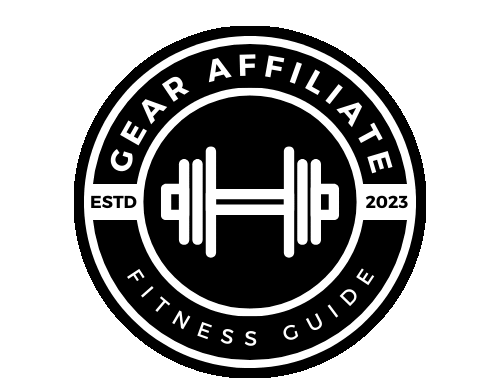
Written by our training and gear testing crew
Built for lifters, athletes, and anyone serious about training through adversity — this guide was made by real coaches who understand what it takes to keep moving forward, even when setbacks happen.
- Understand What Counts as a Minor Injury
- Rule #1: Don’t Train Through Pain — Train Around It
- Rule #2: Reduce Inflammation Without Stopping Movement
- Rule #3: Modify Your Program — Don’t Abandon It
- Rule #4: Add Supportive Equipment — Strategically
- Rule #5: Prioritize Recovery and Address the Cause
- Sample Training Adjustments (By Injury)
- When to Rest Completely
- Final Thoughts: Train Smart, Recover Harder
How to Train Around Minor Injuries
(Without Losing Progress)
Getting sidelined by a small injury can be incredibly frustrating — especially when you’re finally building momentum in the gym. But here’s the good news: most minor injuries don’t mean you have to stop training altogether. With smart adjustments and the right mindset, you can continue training while promoting recovery and avoiding long-term setbacks.
This guide walks you through how to train around minor injuries — whether it’s a tweaked shoulder, sore knee, or nagging lower back — so you can maintain your progress and come back stronger.
Understand What Counts as a Minor Injury
Before anything else, you need to identify the severity of the issue. Minor injuries typically include:
- Mild muscle strains or tightness
- Tendinitis (like tennis elbow or patellar pain)
- Joint soreness (from overuse, not trauma)
- Soft tissue irritation (e.g., slight rotator cuff discomfort)
- Low-grade inflammation (like IT band tension or plantar fasciitis)
If you’re dealing with swelling, sharp pain, numbness, loss of strength, or any injury from a fall or pop — stop and see a medical professional. This post is for those lingering, manageable pains that limit you but don’t sideline you completely.
Rule #1: Don’t Train Through Pain — Train Around It
If a movement causes pain in the joint or surrounding muscle, don’t force it. Pain isn’t weakness leaving the body — it’s your body warning you something’s off.
Instead:
- Switch to a pain-free variation
- Reduce the range of motion (ROM)
- Adjust your grip or stance
- Use lighter loads with slower tempo
Example:
Can’t bench due to shoulder pain? Swap it for floor presses, neutral-grip dumbbell presses, or even push-ups with handles to reduce internal rotation.
Rule #2: Reduce Inflammation Without Stopping Movement
One of the worst things you can do for minor soft tissue injuries is to stop moving entirely. Active recovery is key.
Here’s what you can do:
- Add blood flow work (light sled pulls, cycling, walking)
- Include mobility drills (shoulder dislocates, hip CARs)
- Foam roll and stretch the surrounding tissues
- Use contrast showers or ice/heat depending on the area
The goal is to keep blood circulating and restore tissue function — not to immobilize yourself and lose strength.
Rule #3: Modify Your Program — Don’t Abandon It
If your injury affects one area (say, your knee), that doesn’t mean you can’t train your upper body or your core. In fact, this is a great time to focus on weak points or things you often neglect.
Here are a few ways to shift focus while you recover:
- Replace squats with trap bar deadlifts or belt squats
- Skip pressing and hammer row volume or arm isolation
- Turn strength blocks into hypertrophy or tempo-based phases
- Use machines or cables to isolate and control movement better
This keeps your body adapting and prevents full regression during recovery.
Rule #4: Add Supportive Equipment — Strategically
Supportive gear can reduce stress on the joints and surrounding tissue if used correctly. We’re not talking about masking pain and pushing through, but about offloading strain so you can keep moving safely.
Useful tools might include:
- Knee sleeves for light compression and warmth
- Lifting straps if gripping is painful (like with tennis elbow)
- Weight belts to control intra-abdominal pressure on low-back issues
- Slant boards or heel wedges for limited ankle/knee mobility
- Resistance bands to deload bodyweight exercises
Just don’t become dependent on these — they’re tools, not crutches.
Rule #5: Prioritize Recovery and Address the Cause
Minor injuries usually don’t happen randomly. They’re often the result of:
- Overuse without deloading
- Poor technique
- Weak stabilizers or mobility restrictions
- Pushing volume or intensity too fast
Now is the time to analyze and correct:
- Have your form evaluated
- Add mobility and activation work to your warm-up
- Improve your sleep and nutrition
- Reduce caffeine or stress (both spike cortisol, which can slow healing)
This is also when supplements like magnesium, collagen, omega-3s, and even ashwagandha can support tissue repair and stress modulation.
Sample Training Adjustments (By Injury)
Shoulder Tweaks
- ✅ Do: Cable rows, landmine presses, neutral-grip DB press, rear delt flys
- ❌ Avoid: Upright rows, behind-the-neck movements, wide grip bench
Knee Irritation
- ✅ Do: Sled pushes, leg extensions, step-ups, hip thrusts
- ❌ Avoid: Deep squats (for now), forward lunges, plyometrics
Low Back Tightness
- ✅ Do: Planks, goblet squats, leg press, chest-supported rows
- ❌ Avoid: Conventional deadlifts, barbell back squats, GHDs
Elbow Tendinitis
- ✅ Do: Curls with fat grips, hammer curls, pushdowns
- ❌ Avoid: Heavy pull-ups, barbell curls, tight grip deadlifts
When to Rest Completely
Even when training around injury is possible, you still need to rest the injured area. A good rule of thumb:
If a movement irritates the injury every time — even with modifications — drop it completely for 7–10 days.
And if there’s no improvement after two weeks, or symptoms worsen, go see a physical therapist. Don’t wait until a small issue becomes chronic.
Final Thoughts: Train Smart, Recover Harder
Getting injured doesn’t mean getting weaker. If you approach it the right way, a minor injury can actually be an opportunity to refocus, rebuild, and return stronger.
Make smart substitutions. Adjust the load and tempo. Pay attention to your recovery habits. And above all else — listen to your body. The best lifters aren’t just the strongest — they’re the ones who train smart and stay in the game longest.
If you found this post to be helpful, then you may be interested in the rest of our blog page here.
At Gear Affiliate, we always want to give our readers more resources to research. Below are a few sources that we have found to be helpful relating to this topic.


